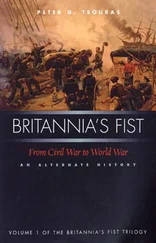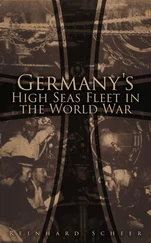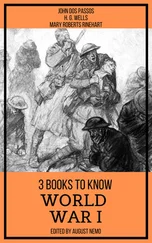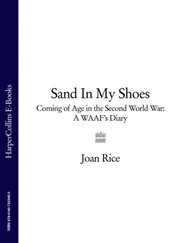17. J.P. Harris, Men, ideas, and tanks, Manchester University Press, 1995, p. 165.
18. George Lindsay had been in the Machine Gun Corps during the war and, following the end of the war, he went to Iraq where he commanded a force of armoured cars. He returned to England in 1923 and became Chief Instructor at the RTC Centre for two years. He was Inspector RTC at the War Office from 1925 to 1929.
19. Captain Basil Liddell Hart had served with distinction in the Great War. He was invalided out of the Army in the 1920s and became a military correspondent. He was an influential writer and an outspoken advocate of tanks.
20. Charles Broad served in the Great War in the artillery and, after serving as an instructor at the Staff College, transferred to the RTC in 1923. He was appointed Commandant of the Tank Gunnery School and, in 1925, he succeeded Lindsay as Chief Instructor at the Tank Corps Centre.
21. Percy Hobart was a dedicated and forceful officer who had served with distinction in the Engineers in the Great War. He transferred to the RTC in 1923. He was a man of firm and fixed views, an excellent trainer of troops, and who, for good or bad, had a significant effect on tank doctrine from 1930 to 1945.
22. See British Dictionary of National Biography under Lambart, Frederick Rudolph. He succeeded his father as Tenth Earl of Cavan while serving in South Africa in 1900. In the Great War he held several senior commands, ending with command of British troops in Italy, March 1918.
23. Harris, Men, ideas, and tanks , pp. 211–212.
24. Ibid., p. 217.
25. Modern Formations , Section 3, The advent of the Armoured Fighting Vehicle, Tank Museum Library, Bovington, 1931.
26. For a sympathetic account of Montgomery-Massingberd’s attitude to mechanisation, see Harris & Toase, Armoured Warfare , pp. 42–43.
27. Harris, Men, ideas, and tanks, p. 247.
28. ‘Handing over notes for my successor’, undated but presumably March or April 1936, M-M 158/9, Montgomery-Massingberd papers, LHCMA.
29. J. Walter Christie (1865–1944) was an American engineer and inventor. One of his inventions was the helicoil suspension system for tanks in which each large road wheel had its own spring-loaded assembly. Christie suspension was used in the Russian BT and T 34 tanks and in the British cruiser range. He was stubborn and prickly, and his attitude to American officialdom resulted in none of his designs being used in American equipment.
30. Harris, Men, ideas, and tanks , pp. 283–4.
31. ‘Notes on my life’, pp. 86–88, ALANBROOKE 3/A/2, Alanbrooke Papers, LHCMA.
32. For an account of the most important tank action in these campaigns see Kenneth Macksey, Tank Warfare: A History of Tanks in Battle, Panther Publications, London, 1976, pp. 98–100. A brief note on the battle of Khalkhin-Gol in August 1939 is in Georgi Zhukov, Marshal Zhukov’s greatest battles (ed. Harrison Salisbury, trans. Theodore Shabad), Harper & Row, New York, 1969, pp. 7–9.
33. Ronald Lewin, Man of Armour , Leo Cooper, London, 1976, pp. 107–122.
34. For a detailed account of this interview, see Lewin, Man of Armour , pp. 127–8
35. George Forty’s The First Victory , Guild Publishing, London, 1990, provides an account of this campaign as a whole; the 6th Australian Cavalry Regiment is mentioned on pp. 161 and 166.
36. ‘The Armoured Division in battle’, issued by 21 Army Group, Holland, December 1944. In the introduction, Montgomery says: ‘This is the third pamphlet in the series I have issued. The first was “Some notes on the conduct of war and the Infantry Division in battle”; the second was, “Some notes on the use of air power in support of land operations and direct air support”; and this one, “The Armoured Division in battle”. These three pamphlets together provide a very useful foundation on which to base our fighting and our training.’
37. George Forty, Tank Commanders , Motorbooks International, USA, 1993, p. 125.
38. G.P.B. Roberts, From the Desert to the Baltic, William Kimber, London, 1987, p. 159.
1. There are many accounts of the Battle of Cambrai and its importance in the history of World War I. General accounts include those by John Keegan, The First World War , Hutchison, London, 1998, pp. 395–7; Cyril Falls, The Great War, 1914–1918 , Military Operations, France and Belgium, 1917 , Perigee, New York, 1959, pp. 315–324; Basil Liddell Hart, A History of World War I (1914–1918) , Faber & Faber, London, 1934, pp. 337–348. Accounts relating to the use of tanks are in Harris, Men, ideas, and tanks, pp. 120–126; A.J. Smithers, A New Excalibur , Leo Cooper, London, 1986, pp. 136–144; Beale, Infighter , pp. 120–126.
2. A brief appreciation of the work of C.E.W. Bean is provided in the preface to vol. IV of the Official History of Australia in the War of 1914-1918 , pp. xiii–xviii.
3. The context of the First Battle of Bullecourt is described in Keegan, The First World War , pp. 250–252. Official accounts of the battle are: ‘Summary of tank operations 9-12 and 23 April 1917’, Part II ‘Operations’, pp. 7–11, PRO WO 95/91; Falls, Official History, Military Operations, France and Belgium, 1917 , The German retreat to the Hindenburg Line and the Battle of Arras, pp. 236–240; Bean, Official History , vol. IV, pp. 270–354.
4. Keegan says of Hubert Gough ( The First World War , p. 424) that he did not have a reputation for thoroughness. He was a cavalryman and a favourite of Douglas Haig, also a cavalryman. Gough had played a leading part in the Passchendaele offensive, and his army had suffered a major share of the casualties. Officers who served under him formed the opinion that lives were lost in the battles he planned because he failed to coordinate artillery support with infantry assaults, failed to limit his objectives to attainable ends, failed to curtail operations that had patently failed, and failed to meet the standards of administrative efficiency which the commander of the Second Army, General Plumer, did so admirably.
5. Bean, Official History , vol. IV, pp. 271–273.
6. Smithers, A New Excalibur , p. 98.
7. Ibid., p. 98; Bean, Official History , vol. IV, p. 315.
8. Smithers, A New Excalibur , p. 98.
9. Bean, Official History , vol. IV, p. 352.
10. Haig to War Office, 5 June 1917, para 1, PRO MUN 4/2791.
11. Fletcher, The British Tanks , 1915-1919, pp. 80–86.
12. The evolution of the Mark V is described in Fletcher, The British Tanks, 1915-1919 , pp. 118–122. The first Mark V was delivered to Central Workshops in France on 14 January 1918.
13. The Battle of Hamel was very important as a demonstration of effective use of combined arms. In the overall scheme of things, however, it was only a small action, as Liddell Hart comments in his A History of the World War I (1914–1918) : ‘It was the brilliant little surprise action at Hamel on 4 July and its revelation of the decline of German morale which inspired Rawlinson with the idea of a wider offensive.’ For detailed accounts of the battle, see Bean, Official History , vol. VI, chapters VIII and IX, and John Laffin, The Battle of Hamel , Kangaroo Press, Sydney, 1999.
14. Keegan, The First World War , pp. 423–440.
15. Ibid., p. 432.
16. Ibid.
17. The Whippet tank, or Medium Mark A, is described in Fletcher, British Tanks 1915-1919 , pp. 115–118, and in Smithers, A New Excalibur , pp. 147–8. It was lighter and faster than the Mark IV or Mark V, and had the potential to be used in the cavalry roles of reconnaissance and pursuit.
Читать дальше












